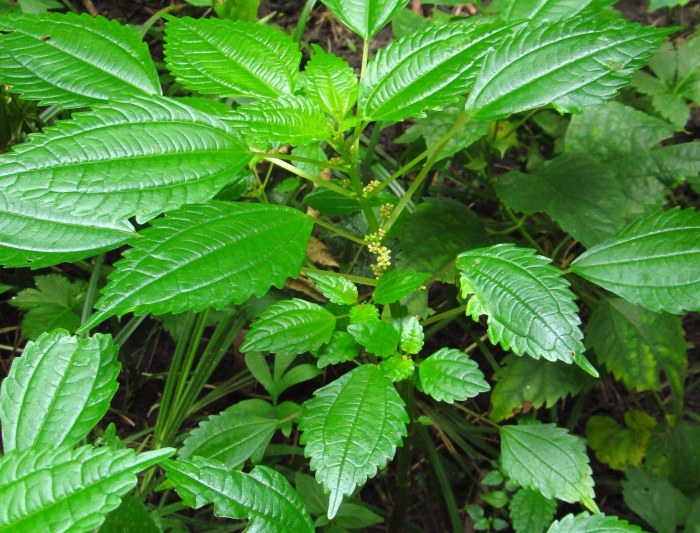Some wildflowers are “showy,” even if small. Not the blossoms on this “common woodland plant.”
Clearweed (Pilea pumila) thrives in wet habitats with light shade. Sometimes called dwarf clearweed or Canadian clearweed, this member of the nettle family is native to most of the U.S. and Canada east of the Rocky Mountains.
For botanically accurate descriptions of clearweed foliage, flowers, and fruit, I recommend the Illinois Wildflowers, Minnesota Wildflowers, or Friends of the Eloise Butler Wildflower Garden websites.
“Somewhat translucent” leaves are this plant’s most distinctive feature and may catch your eye if you are walking in the woods in late summer. According to Illinois Wildflowers, clearweed foliage “has been useful in biology classes to show the uptake of liquids from the roots into the stems and leaves.”
Usually, when leaves appear shiny in my pictures, I’ve done something wrong with my camera’s light settings. But clearweed foliage really does look like this. (Stems are also shiny, though that’s not easy to see here.)
You won’t see clearweed’s tiny flowers (about one millimeter across) unless you crouch down and look hard. Sad to say, I was unable to do justice to the “small and indistinct” flowers, which come in male and female forms, both lacking petals. The flowers have no scent either.
So what is this plant good for? Illinois Wildflowers explains.
The flowers are wind-pollinated, therefore they don’t attract many insects. The caterpillars of the following butterflies feed on the foliage of Clearweed: Nymphalis milberti (Milbert’s Tortoiseshell), Polygonia comma (Comma), Polygonia interrogationis (Question Mark), and Vanessa atalanta (Red Admiral). These caterpillars feed on other members of the Nettle family as well. The larvae of a moth, Cosmopterix pulcherimella (Beautiful Cosmopterix Moth), mine the leaves. An aphid, Pseudasiphonaphis corni, uses Clearweed as a summer host, where they suck juices from the stems and flowering stalks. This species is also one of the host plants of a polyphagous leafhopper, Empoasca recurvata.
I had hoped to capture the developing fruit of clearweed in early October. But those are no easier to photograph than the flowers. Minnesota Wildflowers notes, “Fruit is a flattened, teardrop shaped seed, up to 1/16 inch long and about half as wide as long.” Readers, I tried.
Top view of a clearweed plant that has finished blooming:







1 Comment
Some plants are just hard to photograph...
…and I think these photos are good. And it’s nice to learn that clearweed is a host plant for Milbert’s tortoiseshell, which is one of the most “wow!” beautiful butterflies in the Upper Midwest.
PrairieFan Thu 24 Oct 12:38 AM